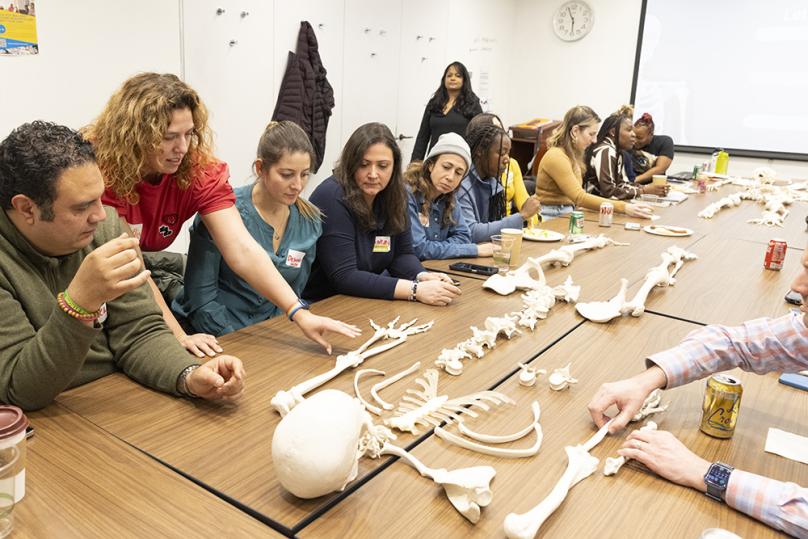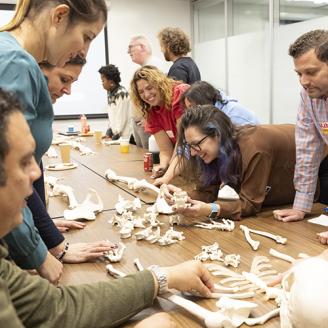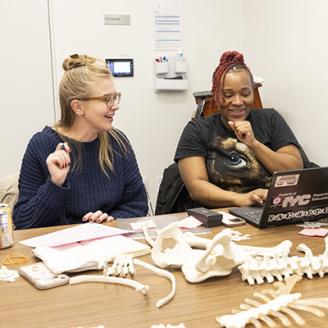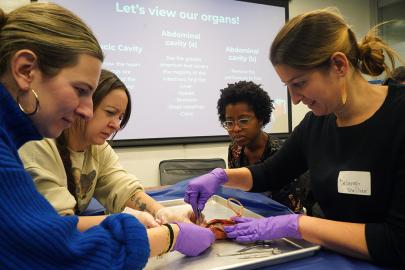
Hundreds of thousands of genes make up the blueprint for the human body and how it works.
Genetic mutations are changes to your DNA sequence that happen during cell division when your cells make copies of themselves. Your DNA tells your body how to form and function. But have you ever wondered how rare genetic mutations manifest in disease?

MƒA teachers investigated this question during a three session MƒA mini-course, “Let’s Get Physical: Exploring the Genes Behind your Body-ody-ody,” exploring how specific genetic mutations lead to anatomical and physiological changes in the human body. Each session focused on a particular region or body system and the genetic mechanisms underlying a related disease - the skeletal system, thoracic and abdominal cavities, the skin.
MƒA Master Teacher Caitlin Reste, who co-facilitated the course with former MƒA Master Teacher Cyntra Bernardo, now an assistant principal in Manhattan, was eager to work with others who showed an interest in how the human body works.
“My colleague and I taught the different disciplines and had been wanting to work together on content that could connect genetics with anatomy,” said Caitlin. “I teach high school Biology, but this was valuable to anyone who wanted to learn more about their body-ody-ody!”

To start, teachers explored the skeletal system and associated tissues to learn more about achondroplasia. They worked together to assemble two disarticulated skeletons, observing the typical shapes of long bones and vertebrae and discussed how achondroplasia affected a person’s long bone development and alignment. In the next session, teachers dove into the thoracic and abdominal cavities via rat dissection, viewing how the position of visceral organs dictates how disease is diagnosed and examined the genetics of situs inversus. Finally, teachers considered what happens when the skin is compromised by examining two genetic disorders, harlequin ichthyosis and hidradenitis suppurativa.
“We all enjoyed learning about the Anatomy and Physiology of various organ systems, and then seeing how some of these disorders affect individuals physically,” said Cyntra. “It was important for teachers to understand the manifestation of a disorder in the body and identify the genetic causes."
Teachers reported they were excited to apply what they learned during this minicourse in their own classroom, specifically introducing diseases as a starting point for learning about body and organ systems in living environment and anatomy classes.

Teachers dove into the thoracic and abdominal cavities via rat dissection, viewing how the position of visceral organs dictates how disease is diagnosed and examined the genetics of situs inversus.